As a part of the Polaris 60th Anniversary series, Snow Goer is flashing back to previous stories written about Polaris snowmobiles, racers and events over the company’s history. As part of that process, this gem was unearthed out of the Snow Goer archives: a 1000-mile endurance test of the 1978 TX 340 Free Air, part of a six-sled torture test aimed at seeming what would break in a three hard days of consecutive running. The article appeared in the December 1977 issue of Snow Goer magazine. Enjoy.
1000-Mile Endurance Test: Polaris TX 340 Free Air
An Enduro Champ With A Winning Tradition
For the record: Polaris snowmobiles captured the first nine places in the 1977 running of the “Winnipeg-to-St. Paul” 500-mile enduro. For the record: Polaris’ professional racing team placed its three man team in one-two-three order in the overall Sno Pro points championship. For the record: Polaris’ 1978 TX 340 Free Air completed SNOW GOER’s 1,000 Mile Endurance Run without any major mechanical problems. In fact, the only problem, if you want to consider it one, was the need to replace a few cleats.
The record speaks for itself. High performance consumer snowmobiles can run fast, run hard, and live. SNOW GOER’s technical inspector found that the TX 340’s free air Star engine could easily have survived another 1,000 miles. The clutch could have used a shot of lubricant in preparation for another 1,000 miles, but the clutch spring showed absolutely no loss of tension. And the suspension springs and idlers were in “like new” condition.

Those are the after-endurance run facts. The facts during the endurance run were as impressive. Two-thirds of the endurance test was run across a hard-surfaced lake. The snow was ample, but pocked with vicious moguls which gave the suspensions an unexpected work out. The remaining 33 percent of the test was conducted on northern Wisconsin snowmobile trails, well-groomed, but tight and twisting. It was the type of trail that showed immediately just how well, or poorly, the sled would handle. And, the speeds run were far above average for an ordinary trail ride – the endurance test riders had to finish the 1,000 miles in 3 ½ days. No pampering of the sleds went on at all.
To the TX’s advantage, its test riding crew consisted of top Polaris factory wrenches-Ray Monsrud, director of cross country racing coordination; Leroy Lindblad, one of the racing department’s best engine/clutch specialists; and, Bo Crosby, an occasional wrench for Polaris’ Sno Pro team. To the TX’s disadvantage, the miles were piled on so fast that not all normal maintenance schedules were followed. For example, the clutch ramps should have been lubricated at 120, 500 and 1200 miles, but were only checked once. Still, at the end of each day’s testing, the factory hands massaged the machine back into shape and checked for loose nuts and bolts, unusual signs of wear, and engine condition. Yes, the factory people knew what to look for. But, nothing was done that the average consumer couldn’t readily do himself. The sled held up that well under the 1,000 miles.
So much for sled reliability. Performance matters in sleds like the TX. And performance is just a tap of the throttle away. With Polaris’ TX line, you have a choice of liquid or air cooling in the 340cc displacement. The TX-L 340 is unquestionably a smoother running, more powerful, and, therefore, quicker version of the TX series, but the TX 340 FA need not take a backseat to most sleds. It delivers.
Like a Japanese commuter train, the TX is .on schedule – with ample power, quick handling, responsive steering and quick stopping. Under the squared-off Midnight Blue cowling, Polaris hides a tried and true 336cc free air twin. Measuring out at 62/55.6mm for bore and stroke, the engine is fed by twin 32mm Mikuni carburetors. A separate Mikuni pump keeps the fuel moving from the seven-gallon gas tank to the carbs. The tuning balance between performance and fuel economy is a near impossible task, you usually need to sacrifice one for the other. In Polaris’ case, the engineers outdid themselves. The little 340 machine proved that it could keep up with all but the hottest of the new liquid-cooleds and still deliver 20-plus miles per gallon.
Helping the Star twin with its performance ·is CD ignition which provides a hotter spark than conventional magneto systems. What that means to you is better burning of the fuel for both more efficient fuel consumption and greater power.
Air cooling comes via large frontal ducts in the cowl. And as SNOW GOER staffers learned during last year’s 1,000 mile endurance test, modern day free airs are every bit as reliable as fan-cooleds or liquid cooleds under just about every snowmobile situation. The main problem with free airs comes in sound control. To lessen the “pinging” and dampen the sound levels inherent with free airs, Polaris engineers deaden the vibration with rubber dowels in the fin areas of the head and cylinders. An L-shaped intake box with foam baffle reduces intake noise at the carbs. At the exhaust side of the engine is the performance-tuned Polartone two-into-one muffler/expansion chamber.
 The engine’s fuel-oil mix is set at 40:1 with regular gasoline. But, Polaris’ factory people used premium grade fuel throughout the endurance run. The reason, they said, was that premium has a guaranteed high octane that allows the engine to consistently burn cooler, saving on engine wear. Regular gas, which can be almost any octane rating from the low 80s to high 80s, burns incompletely and tends to leave more deposits. If the Polaris test riders’ choice of fuel is any indication at all, premium is a good choice for high performance machinery.
The engine’s fuel-oil mix is set at 40:1 with regular gasoline. But, Polaris’ factory people used premium grade fuel throughout the endurance run. The reason, they said, was that premium has a guaranteed high octane that allows the engine to consistently burn cooler, saving on engine wear. Regular gas, which can be almost any octane rating from the low 80s to high 80s, burns incompletely and tends to leave more deposits. If the Polaris test riders’ choice of fuel is any indication at all, premium is a good choice for high performance machinery.
Ron Helms, SNOW GOER’s technical adviser, stated that the “pistons and combustion chambers showed no abuse whatsoever.” The drivetrain combination of primary and secondary clutches is straight, old reliable Polaris. Proven over many race seasons, the Polaris bell-shaped drive clutch delivers power quickly to the track. Engagement is smooth and puts the engine on its torque curve “right now.” The secondary unit is mounted on a secondary shaft at the power take-off side of the engine. The final drive shares the chaincase housing with the hydraulic disc brake assembly.
Long a feature of Polaris snowmobiles, the hydraulic disc brake remains one of the best in the industry. It can be modulated with a minimum of force and totally locks the track for panic stops.
Throughout the 1,000 mile endurance run, the only place where the TX fell below par was in the breakage of cleats. While there probably would have been some cleats breaking anyway, the problem was magnified when one of the test drivers clobbered a boulder hidden by the snow. Three cleats were replaced during the test. At the final inspection, technical advisor Helms noted that four more cleats would have needed replacement. The total cost for the 1,000 miles was estimated at $13.00, plus labor.
Other than the cleat breakage, the track and suspension system came through the test with no faults. The track itself is a 15-inch wide, rubber/cord unit with molded-in rubber “star-shaped” grippers. The suspension ·is a parallel rail slider with single shock and torsion springs. Since the SNOW GOER tests, Polaris engineers have revalved the shocks and recalibrated the spring tensions for a smooth, softer ride. The harsh ride of the pre-production ‘78 TX had drawn some criticism from SNOW GOER test riders Bob Snyder and Jack Cork.
Another change in the production TX’s will be the foam material used in the seat. A different formulation has been devised which gives a more shock absorbent feel. The addition of a seven gallon fuel tank is another noticeable change for ‘78.
But, the most noticeable change of all is in coloration. The new TXs will be deep, dark blue, which Polaris calls Midnight Blue. Red and white accents set the new ’78s apart from previous TXs.
Left unchanged is the Polaris penchant for durability over the long haul. Winning more Winnipeg races than any other snowmobile manufacturer; capturing more Sno Pro races in a single season than any other factory; and, completing SNOW GOER’s second annual endurance run with only a handful of broken cleats is testimony to Polaris’ emphasis on quality. A winner on the ovals and cross country circuit, Polaris is a winner on the trail.


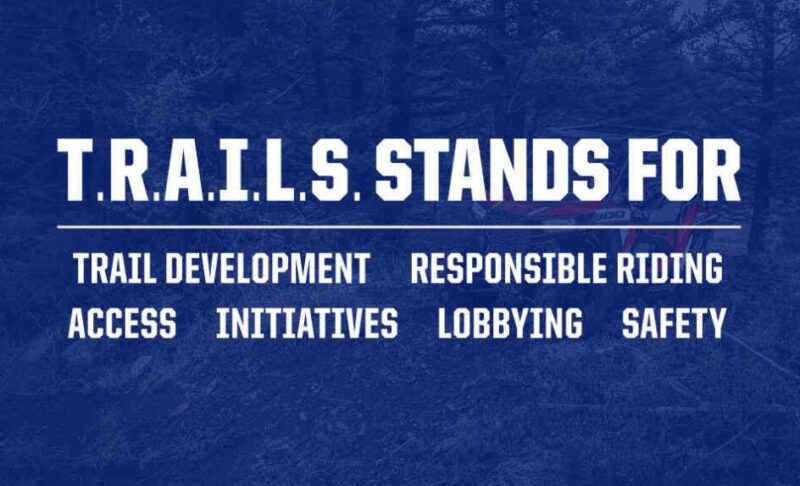
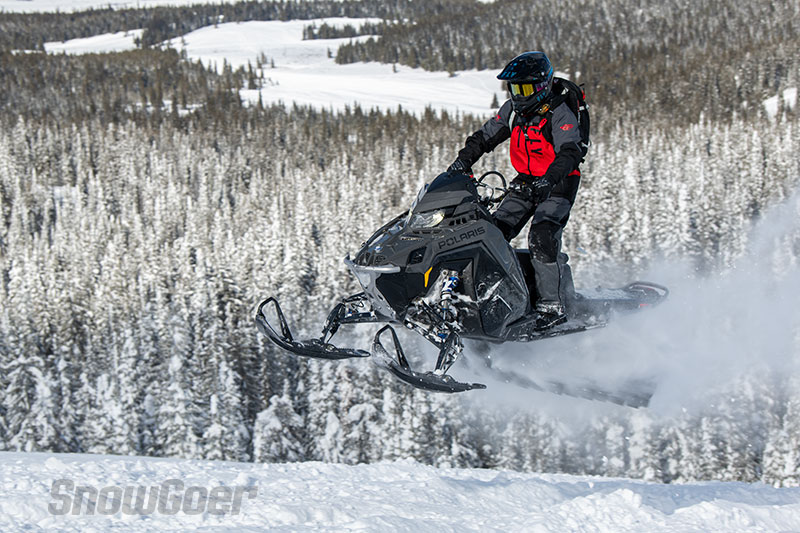
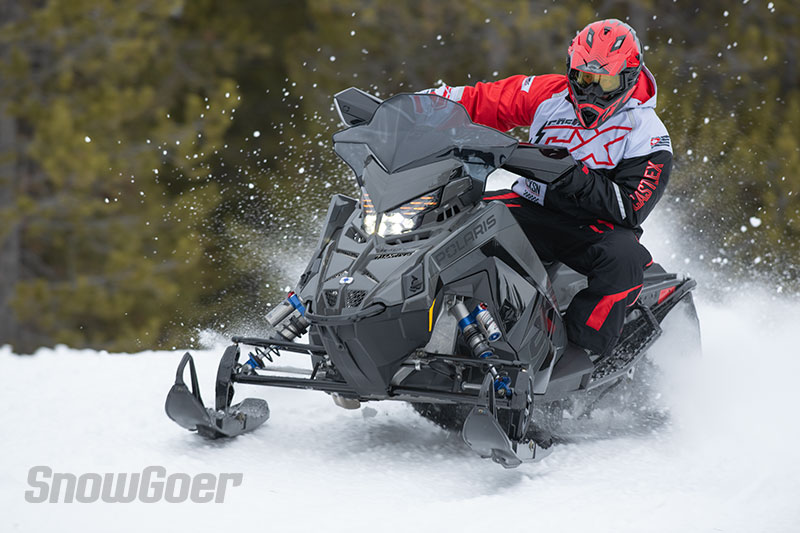
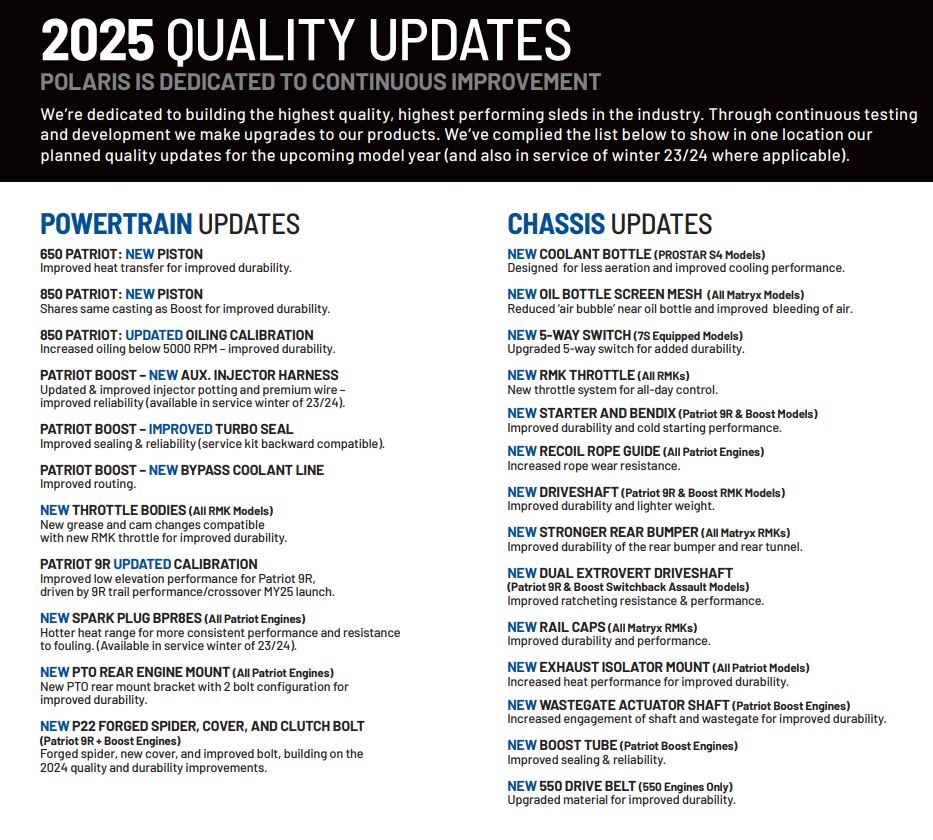
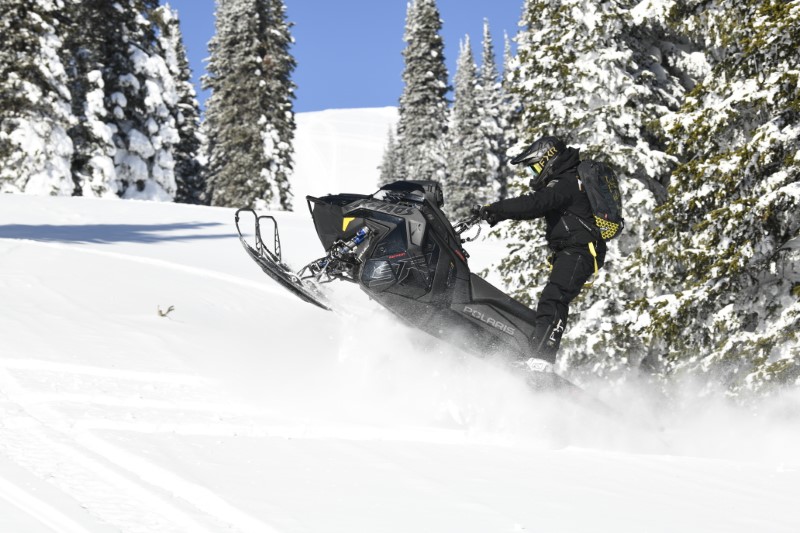
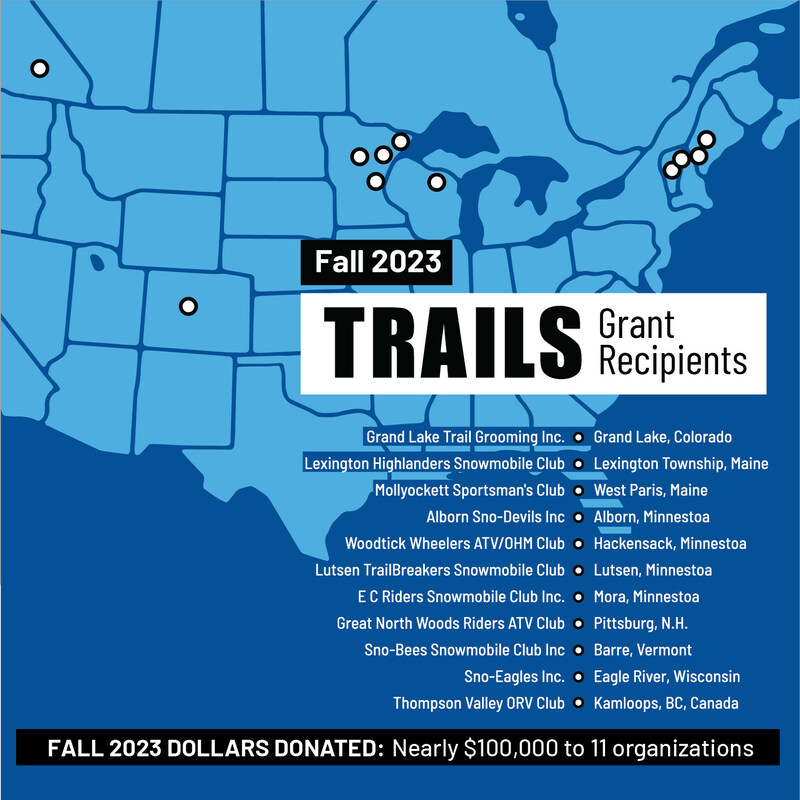
Best snow machine I ever had turned a lot of heads.